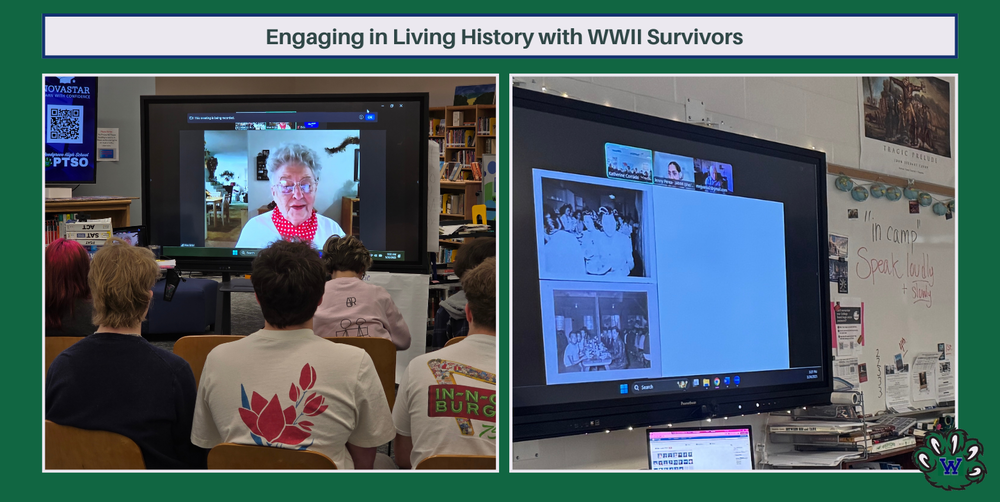Students at Woodgrove High School recently took their U.S. History lessons beyond textbooks by virtually connecting with individuals who lived through some of the most pivotal moments of the 20th century.
Woodgrove’s AP U.S. History teacher, Kate Corrado, and her students participated in an immersive Zoom session with the Japanese American National Museum in Los Angeles. This session offered firsthand insight into one of the darkest chapters of American history—the incarceration of Japanese Americans during World War II.
Following the attack on Pearl Harbor in 1941, Executive Order 9066 led to the forced removal and incarceration of over 120,000 Japanese Americans—most of them U.S. citizens—in camps across desolate areas of the country. Families lost their homes, businesses and livelihoods, spending years behind barbed wire.
The museum brought this history to life by utilizing its wealth of resources, including personal stories, photographs and artifacts. Students explored these materials during the session and participated in an interactive Q&A with a survivor of WWII homefront incarceration. The conversation offered valuable personal insight, helping students understand the resilience and strength of those who endured this injustice.
Meanwhile, in Woodgrove’s Dual Enrollment U.S. History class, Corrado introduced students to Mae Krier, a 99-year-old original Rosie the Riveter. The meeting between Corrado and Krier years ago blossomed into a lifelong friendship, offering students a once-in-a-lifetime opportunity to hear Mae’s story.
Born during the Dust Bowl era, Mae lived through the hardships of the Great Depression before becoming a riveter at Boeing’s Seattle bomber factory during WWII. She helped produce B-17s and B-29s for the war effort. Like thousands of women across the country, Mae answered the call to support the war, becoming a central figure in the iconic Rosie the Riveter movement, which redefined women’s roles in the workforce.
Students learned that while the iconic "Rosie the Riveter" image is often associated with women working with rivets in factories, women performed a wide range of jobs, contributing significantly to the war effort across various industries.
Mae Krier spent decades advocating for the recognition of the Rosie the Riveters. Her persistence led to the establishment of March 21 as Rosie the Riveter Day of Remembrance and earned the Rosies the Congressional Gold Medal for their service.
During an extended Q&A session, Mae captivated students with stories from her life before, during and after the war. Her blend of deep historical insight and lighthearted, humorous exchanges, along with her inquiries about the students’ hopes, dreams and ambitions, highlighted her youthful spirit and sharp wit. Mae’s inspirational message resonated with all students, especially encouraging the female attendees with a resounding "We Can Do It!" attitude.
Experiences like these allow students to connect with history in a meaningful way. By hearing personal narratives, students deepen their understanding of the past while honoring those who lived it. This unique opportunity mirrors other impactful experiences happening across the Division, fostering a deeper connection to history for all students.

